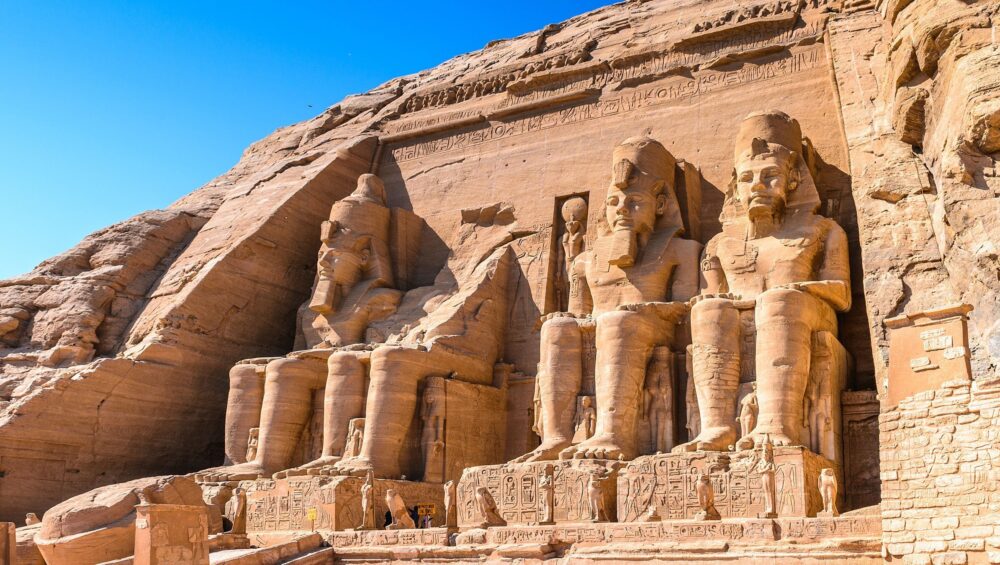The massive rock-cut Abu Simbel temples, situated along Lake Nasser’s shores south of Aswan, rank among Egypt’s most famous landmarks. Pharaoh Ramesses II constructed these impressive structures to delineate the Egyptian Empire’s southern border with Nubia during the height of the New Kingdom.
The temples aimed to showcase the Egyptian pharaohs’ power to all beholders. They feature some of the era’s most remarkable carvings, with the entrance to the larger temple guarded by four immense statues.
Rediscovery of Abu Simbel’s Temples
Swiss explorer Johann Ludwig Burckhardt rediscovered the Abu Simbel temples in 1813 after they had remained isolated from civilization. Desert sands largely obscured the giant statues at the temple entrance until their complete uncovering in 1909, leading to the temples’ rise in fame as a symbol of southern Egypt.
Relocating the Abu Simbel Temples
The rising Nile floods due to the Aswan High Dam construction endangered the Abu Simbel temples. In response, workers disassembled and relocated the temples to a desert plateau 180 meters west and 64 meters above their original position in 1968. This meticulous operation involved breaking the temple into pieces weighing between 3 and 20 tons and reassembling it precisely in its new location. The project took over five years to complete.
Exploring the Abu Simbel Temple
There are two temples at the site. The Great Temple, Ramesses II’s temple, and the Lesser Temple were dedicated to his wife, Queen Nefertari.
Great Temple
It took about 20 years to build the Great Temple, dedicated to Amun, Rahorakti, Ptah, and Ramesses II himself. It is one of Ramesses II’s grandest temples in Egypt. Four 20-meter tall statues of a seated Ramesses II guard its entrance. The temple façade features hieroglyphs celebrating Ramesses II’s victory at the Battle of Kadesh.
The extensive temple houses several halls honoring Ramesses and his family. Its innermost chamber, the Holy of Holies, remains dark all year except for two specific days, demonstrating advanced knowledge in astronomy, mathematics, architecture, and science.
Lesser Temple
The Lesser Temple, dedicated to the goddess Hathor and Queen Nefertari, is smaller than the Great Temple. It features two large groups of figures separated by a central doorway on its rock façade.
Sun Alignment in the Great Temple
Twice a year, on February 22 and October 22, sunlight illuminates the statues of Ramesses and the gods inside the Great Temple. These dates, marking Ramesses II’s coronation and birthday, align the temple so that the sun shines on three of the four sanctuary statues, leaving the fourth, representing Ptah, in the shadows. This alignment has continued for over 3,200 years.
Visiting Abu Simbel
Most visitors reach Abu Simbel via a short flight from Aswan, though the temples are also a key stop for Lake Nasser cruises. These cruises offer unique views of the temple in early morning light and under moonlit skies.




